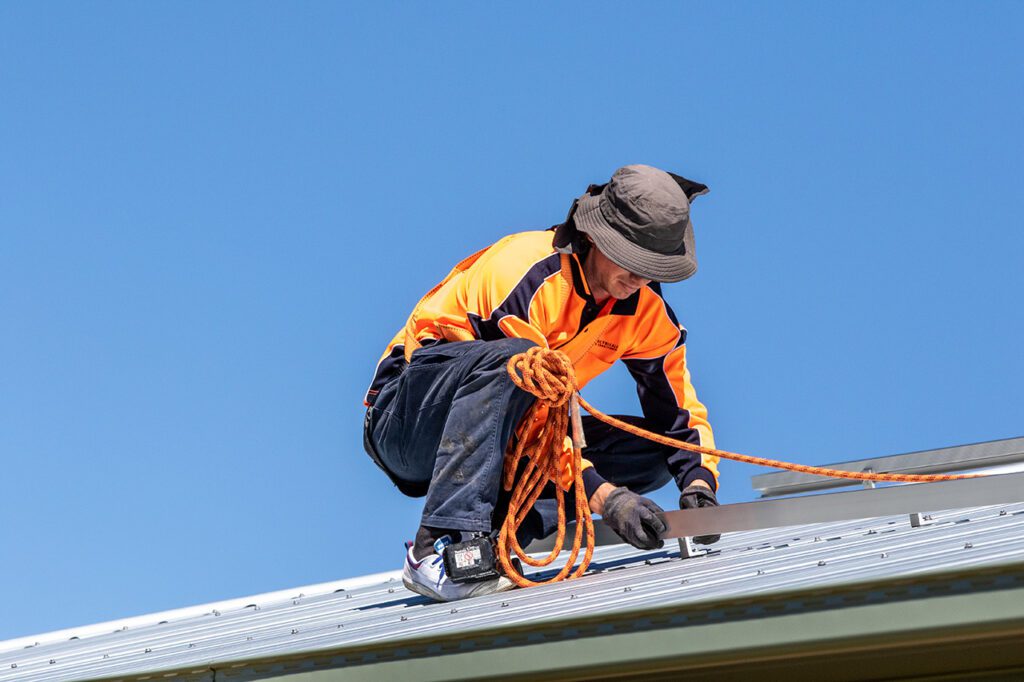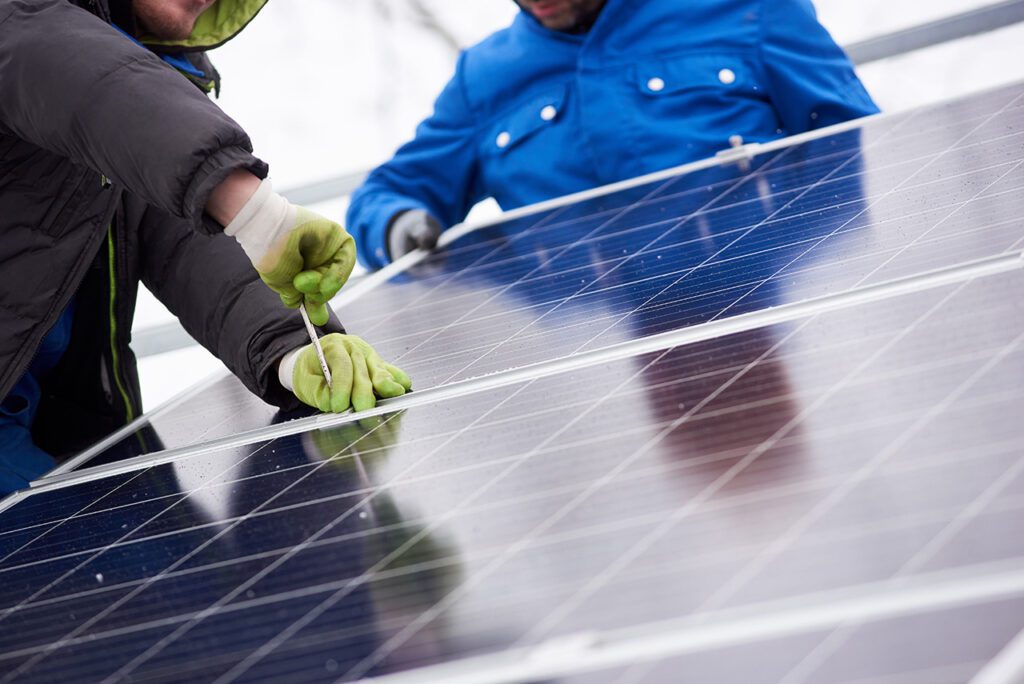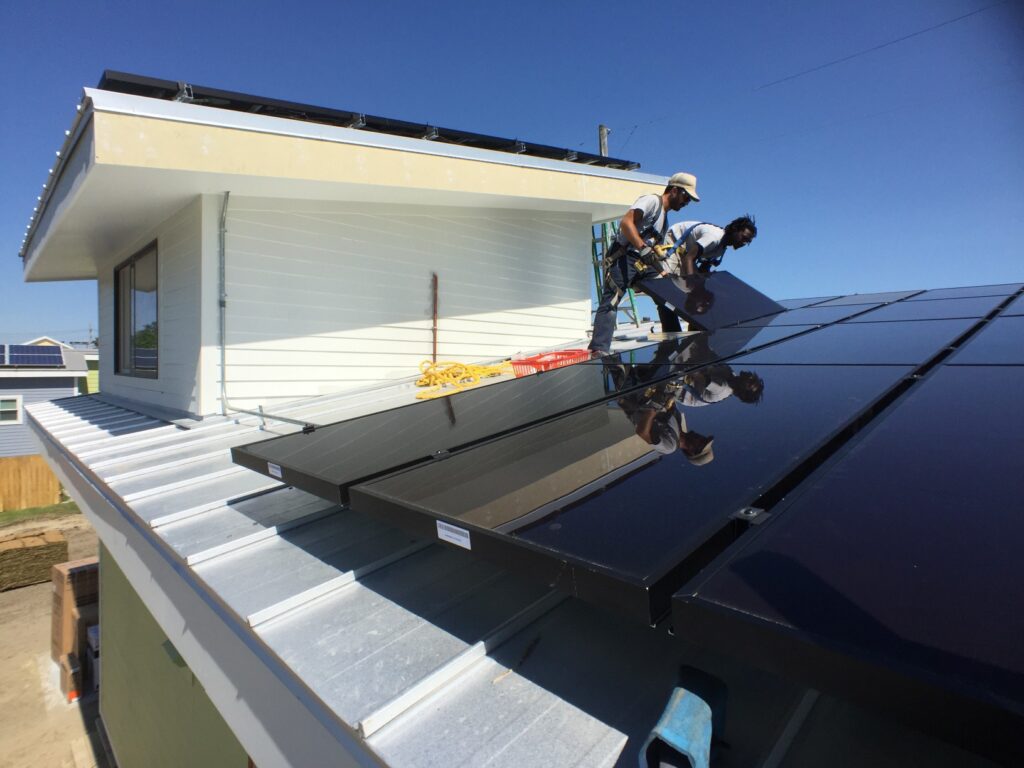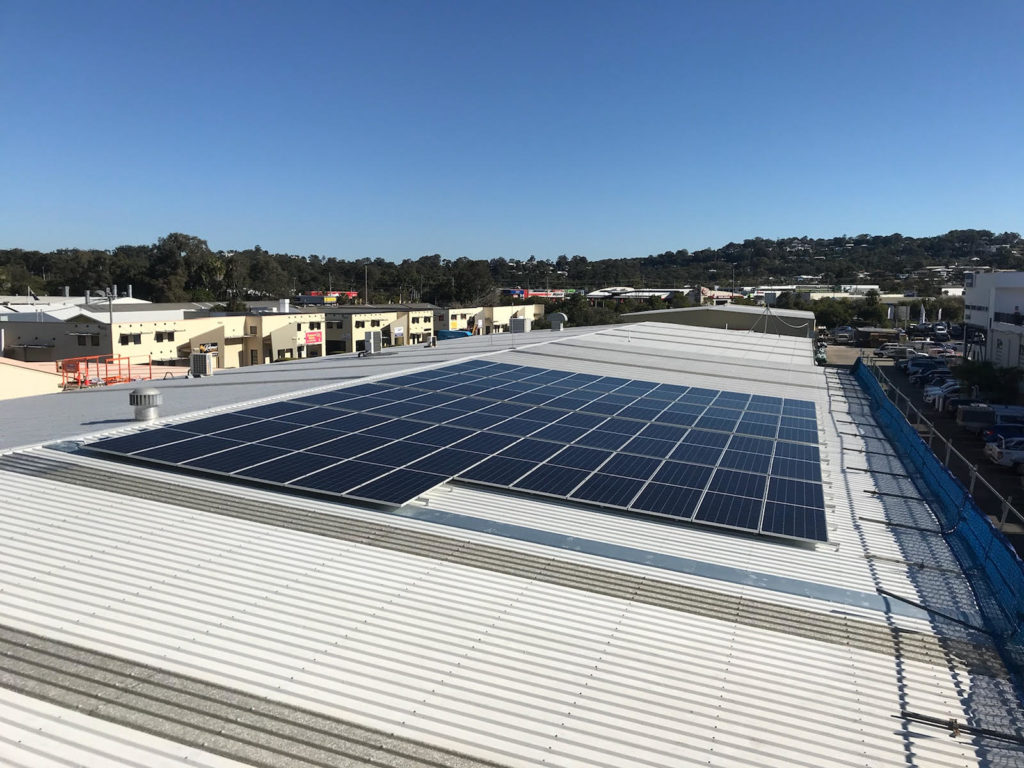Solar energy is one of the most versatile and abundant sources of renewable energy available today. It has been used in a variety of applications, from powering cars to providing electricity for homes and businesses. A key component of any solar power system is the solar inverter. Solar inverters are responsible for taking the direct current (DC) electricity produced by photovoltaic cells and transforming it into alternating current (AC) electricity that can be used by electrical appliances in your home or business. This article will explore what solar inverters are, how they work, and why they are an essential part of any solar power system.
The sun’s radiation contains an immense amount of energy which can be harnessed through photovoltaic cells. These devices convert light particles into electric current; however, this current needs to be converted into usable AC electricity before it can be put to use in our homes or businesses. That’s where solar inverters come in. Inverters take DC electricity generated by photovoltaic cells and transform it into AC electricity so you can turn on lights or charge your phone with ease.
A quality solar inverter plays an integral role in ensuring that your solar panel system functions properly and efficiently over time. The modern market offers a wide range of different types of inverters designed for various purposes such as grid-tie systems, off-grid systems, microinverters, string inverters, etc., all with their own individual features and benefits. Therefore, having knowledge about what type of inverter would best suit your application is essential when considering installing a new solar energy system at home or at your business premises.
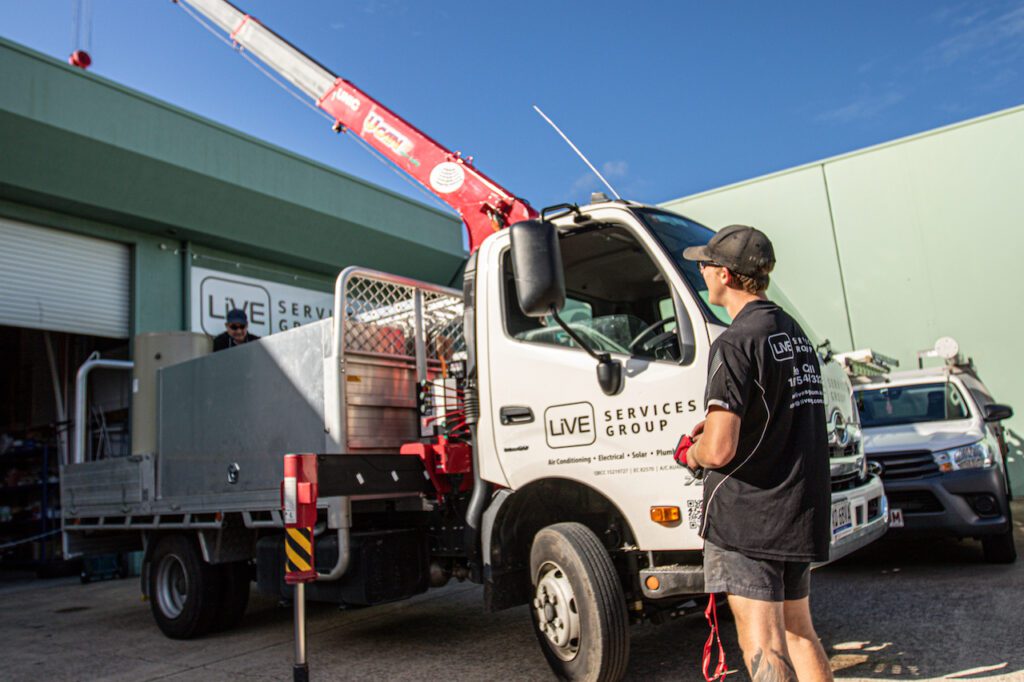
What Are The Type Of Solar Inverters
Solar inverters are a critical component of any solar PV system. They are the devices that convert direct current (DC) energy from photovoltaic (PV) panels into alternating current (AC). Depending on the type of installation and power needs, there are different types of inverters used for solar installations.
The most common type is a string inverter, which is essentially one large unit connected to multiple strings of modules in a PV array. String inverters can provide maximum efficiency when properly matched with their associated solar modules. Power or hybrid inverters offer an integrated approach, combining a central inverter with individual power optimizers at each module to ensure maximum output throughout the day and over time. Micro-inverters are also available and they connect directly to individual solar modules rather than being installed centrally in the system.
No matter what type of inverter is chosen, it should be designed to match the specific requirements of each particular solar installation. The right combination will maximize performance while minimizing overall cost and downtime due to maintenance or repair issues. Ultimately, selecting the correct type of inverter helps ensure that your solar PV system operates efficiently and effectively for years to come.
String Inverters
String inverters are a type of solar inverter that allows for direct current (DC) from the solar PV array to be converted into alternating current (AC), which is then used to power homes, businesses and other structures. A string inverter works by connecting several individual solar modules together in series with one another, forming an electrical ‘string’. This string is then connected to the inverter, which converts the DC generated from each module into usable AC energy.
String inverters are often chosen for larger-scale operations such as commercial or industrial systems due to their capacity for providing large amounts of output at lower costs than microinverters or central inverters. However, this comes with some drawbacks such as decreased system efficiency when shading occurs on certain parts of the solar array. Additionally, if one panel becomes faulty within the string, it can affect production from all panels in that particular string.
Here are 5 key points about String Inverters:
- Used in larger-scale operations like industrial and commercial applications
- Connects multiple individual solar modules in series to form an electrical ‘string’
- Converts direct current (DC) generated by each module into usable alternating current (AC) energy
- Can provide large amounts of output at a relatively low cost compared to microinverters and central inverters
- Shading on any part of the array will reduce overall system efficiency
By using a string inverter, you can create a reliable and efficient solar power system capable of producing enough electricity to meet your needs while remaining cost effective. As long as proper monitoring equipment is installed alongside your system with a string inverter, any issues related to shading or faults can be quickly addressed before they become major problems. From here we move onto discussing Micro Inverters; devices designed specifically for smaller residential installations where reduced weight and size are important factors.
Microinverters
Micro Inverters are one type of solar inverter that is used in Solar Photovoltaic (PV) systems. They provide the necessary conversion from DC to AC power for each individual solar panel, rather than a string of panels using only one inverter. This allows for more efficient energy production and greater system flexibility. There are many different types of micro inverters available on the market, with some of the main brands being Enphase Energy, SunPower, APSystems, and SolarEdge Technologies. Each company has its own unique features and technologies designed to meet specific customer needs.
The key benefit of micro-inverters is that they allow for maximum efficiency as each individual solar panel can operate at peak performance level regardless of shading or orientation issues. Additionally, because an inverter is needed to be able to convert DC power into AC electricity, having multiple smaller units eliminates the need for large centralized components which helps reduce maintenance costs over time. Finally, if there is any damage or failure within part of a PV system due to weather conditions or other external factors, it will not affect all parts connected by one single inverter but instead just those affected directly.
Power Optimizers (Power Inverter)
Power Optimizer Inverters are the second type of inverter option for solar PV systems. They provide maximum power point tracking and enable optimized energy harvesting from each individual module. To choose a Power Optimizer Inverter, it is important to first have an understanding of how much energy will be generated by the system and what sort of load requirements are needed.
| Inverter Option | Pros | Cons |
|---|---|---|
| Grid Connected Solar | Easy installation; Can connect with existing utility grid Low-cost maintenance & monitoring; No batteries required No need for backup generator or manual intervention in case of blackouts Lower upfront investment costs than other solutions | Higher electricity bills if solar production does not cover all consumption needs Not suitable for off-grid applications Limited flexibility in terms of usage profile (e.g., can’t store excess energy) |
| Power Optimizers | Able to use different types of modules together within one string. Improved efficiency compared to traditional grid-connected systems. Increased reliability due to improved performance management. Integrated data communication capabilities allow remote monitoring and control via web portal/smartphone app. | More expensive than Grid Connected Solar Systems. More complex installation process requiring additional components such as DC optimizers, AC combiner boxes etc… Requires large cabling infrastructure which increases total system cost. |
Solar Inverters are the most common component in any solar installation, converting direct current from the photovoltaic cells into alternating current that can power your home’s electrical appliances. One popular choice among many homeowners is a Power Optimizer Inverter – this type of inverter provides greater efficiency and flexibility when compared to traditional grid-connected options, making it ideal for those looking for higher performance from their solar installations. It also offers intelligent features like integrated data communication and remote monitoring capabilities through its sophisticated software platform, allowing you to keep track of your panels’ output even when away from home. With these advantages come some drawbacks – namely increased upfront costs due to more complex hardware setup – but overall they offer a great value proposition for those seeking reliable solar energy solutions at affordable prices. Ultimately, selecting the right inverter depends on your specific needs and budget constraints, so make sure you do thorough research before deciding on the best option for your particular solar PV system setup.
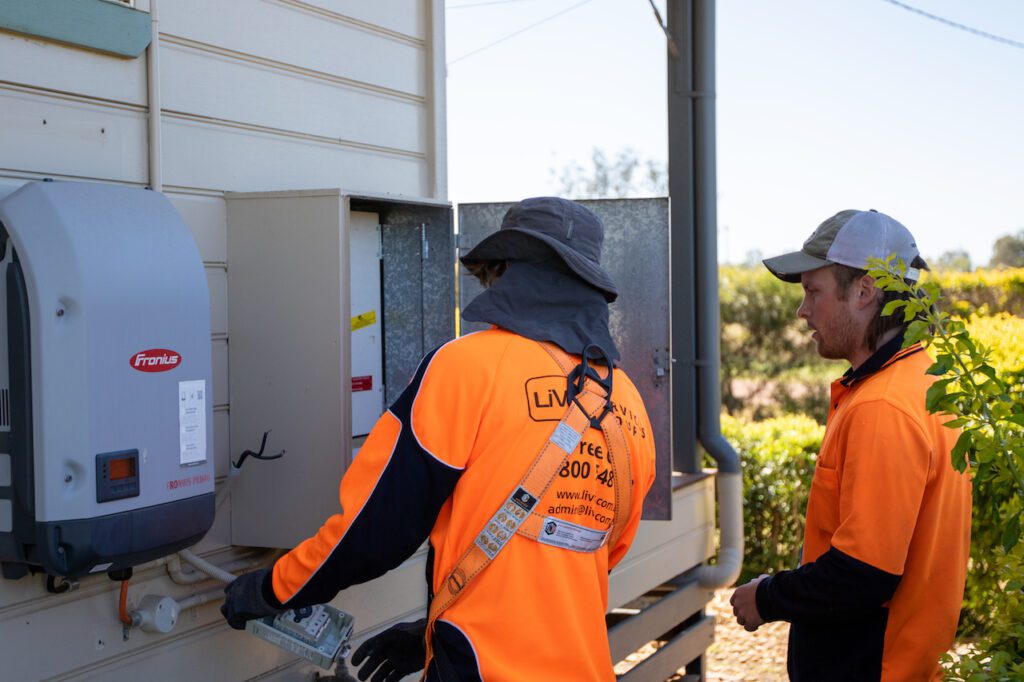
How Do Solar Panel Inverters Work?
Solar inverters are a crucial component of any solar energy system. A solar inverter is an electrical device that converts the direct current (DC) from the sunlight that gets sent to the inverter into alternating current (AC). This AC power can then be used by various appliances in your home or business. For most residential and commercial applications, this AC power must match what comes out of your local utility grid so it can easily be used with your existing wiring.
In some cases, such as when installing a new solar PV system, battery storage systems may also need to be integrated for off-grid use or for backup during times of outages or high demand. The inverter must convert DC from both sources – either from the batteries directly or from the original source – into usable AC power. Inverters come in different sizes depending on their capacity and functionality. Some have multiple inputs allowing them to integrate more than one renewable energy source while others are designed specifically for single input usage like a traditional solar PV array setup.
Today’s modern solutions allow users to monitor their solar energy output through advanced technologies like cloud-based monitoring software, providing greater accessibility and control over their electricity supply than ever before. As technology continues to advance, more efficient and cost-effective options become available making it easier than ever to take advantage of clean renewable energy sources such as sun-powered photovoltaics.
How To Choose A Solar Inverter For?
Solar inverters are an essential part of any solar panel system. They convert the energy output from your solar panels into electricity that can be used in the home or stored in batteries to power your appliances when the sun is not shining. When you decide to invest in a solar panel system, one of the first questions you should ask yourself is “what are the best solar inverters?”
There are many different types of inverters available on the market today, and each has its own advantages and disadvantages depending on what type of setup you have. For example, if you plan to use your solar power for large-scale projects such as powering commercial buildings or entire communities then you will need an industrial-grade inverter. This type of inverter is designed to handle high levels of energy production over long periods of time with minimal maintenance required. On the other hand, individuals who only want to install a few panels on their roof may opt for a smaller residential grade model which offers lower cost but less reliable performance than an industrial-grade option.
When selecting a solar inverter it is important to look at how much power it can produce, what type of warranty it comes with, and whether or not it allows for separate voltage control across multiple individual panels so that the amount of energy produced by each panel can be monitored and adjusted accordingly. Additionally, some models come equipped with additional features such as remote monitoring capabilities and battery storage support which can help maximize the efficiency and overall lifetime value of your investment. By taking all these factors into consideration when making your selection, you can ensure that you get the most out of your new solar system while also ensuring that it meets all safety standards set forth by relevant regulatory agencies. With careful research and planning ahead, choosing the right solar inverter for your needs doesn’t have to be difficult – just remember to compare brands carefully before deciding!
What To Look For In An Inverter For My Solar System?
When choosing a solar inverter, it is important to consider several factors. Solar panels generate electricity from the sun, and this energy needs to be converted in order for it to be used by home appliances. This conversion takes place via an inverter system that connects to the back of the solar panels. The inverter runs on direct current (DC) that comes from the solar panel array and converts it into alternating current (AC) that can connect with your household’s electricity grid or be stored in batteries.
Inverters are around the size of a small suitcase and they come in different types such as string or microinverters. String inverters are usually installed once at the beginning of installation while microinverters are attached individually to each panel allowing you more flexibility in designing your system. Additionally, some companies offer integrated systems where both components –the solar modules and inverter- come together within one package.
Choosing the best inverter depends on several factors including budget, power output per module, efficiency rate, power factor rating and warranty length among others. It’s recommended to take time researching all available options before making a purchase decision since there is no universal model suitable for every solar situation; finding out what works best for your particular case will ensure better performance and cost savings down the road.
How Much Do Solar Inverters Cost These Days?
Solar inverters are an essential part of any solar energy system. A solar inverter converts the direct current (DC) from a solar panel into alternating current (AC), which can then be used in your home or business to power lights, appliances and other electrical devices. As such, understanding how much these inverters cost is important for anyone considering investing in a solar installation.
The cost of a solar inverter will depend on several factors, including size, type and brand. Smaller residential systems may require only one inverter while larger commercial installations could need multiple units. The most popular types are string inverters, microinverters, hybrid inverters and battery-based models. Each has its own advantages and associated costs that should be taken into account when budgeting for your project.
When it comes to brands, there are many different manufacturers offering quality solutions at various price points. Some of the leading names include SolarEdge Technologies Inc., Enphase Energy Inc., SMA America LLC and Fronius USA LLC among others. Prices range widely depending on the model and features you choose but typically start around $500 – $800 USD for smaller residential applications with higher capacity models costing up to several thousand dollars each.
For those who want maximum efficiency with their solar setup, investing in quality components like high-performance inverters is always wise choice — they help ensure the longevity of your system as well as maximize energy production over time so you get more out of your investment today and throughout its lifetime.
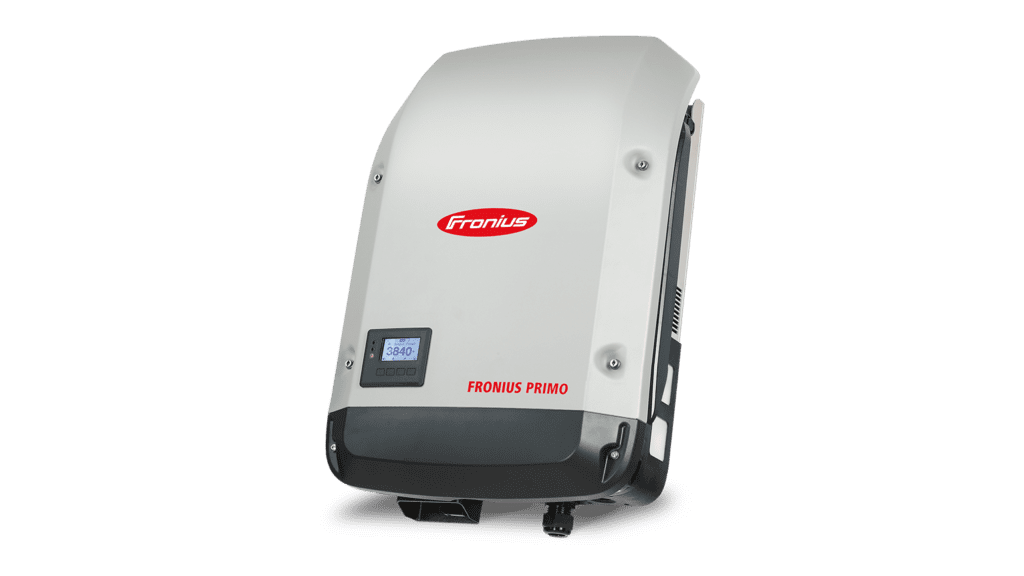
What Are The Best Inverter Brands?
Solar inverters are an essential component of a solar PV system, converting the energy produced by the solar panels into usable electricity. Inverter brands differ in quality and features, so it is important to research what kind of inverter best suits your needs before installing a solar PV system. Battery inverters are necessary for residential systems that use additional battery storage– these types of single-inverter hybrids allow homeowners to draw power from both their solar panel system and battery during peak consumption periods.
The most popular brands of inverters used in residential solar energy include SolarEdge, SMA Sunny Boy, Fronius Symo, Huawei SUN2000L and Delta Energy Systems. Each brand offers several different models to choose from based on size and type of installation, such as grid-tie or off-grid. For example, SolarEdge’s HD Wave technology provides maximum efficiency with its unique design which reduces losses due to DC wiring length or shading across individual solar panels within a larger array. Similarly, SMA Sunny Boy’s transformerless 3-phase string inverter has proven more reliable than many traditional transformer designs while providing high yields even at low irradiation levels.
When considering an inverter for residential applications, it is also important to find out if local incentives may be available depending on where you live. Many state governments offer tax credits or other incentive programs for those who install panel systems that meet certain requirements; speaking with a CEC-approved solar installer today – Live Services Group! can provide further clarity about the potential savings associated with investing in renewable energy sources like rooftop photovoltaics (PV).
Speak With A Cec Approved Solar Installer Today – Live Services Group!
Solar inverters are a critical component of any solar energy system. Without them, the electricity from your solar panels wouldn’t be able to power your home or business. An inverter is typically mounted on the wall and converts the direct current (DC) electricity produced by your solar panels into alternating current (AC) that can be used in homes and businesses.
There are many different brands and types of inverters available; each with its own advantages, features, and price points. The right one for you depends on several factors such as your budget, desired efficiency levels, type of panel being installed, and more. It’s important to find an installer who understands all these aspects when selecting an inverter so they can provide the best advice possible for your individual situation.
Another option is a separate battery/inverter combination unit which allows you to store excess energy generated during peak times for use later on when demand increases. This set up requires two components: a battery storage device capable of holding large amounts of charge plus an inverter about the size of refrigerator that will convert stored DC electricity back into usable AC power when needed.
When considering the selection process it’s important to take into account not only cost but also performance ratings like maximum wattage output per solar panel array area and others – this way you’ll get both value for money as well as reliable service over time without having to worry too much about maintenance costs down the road. Speak with a CEC-approved Solar Installer today at LiVE Services Group! to get help finding an appropriate solution tailored specifically towards meeting your needs now and in future years ahead.
Frequently Asked Questions
How Long Do Solar Inverters Typically Last?
One of the most important components in any solar energy system is the inverter. Inverters are essential for converting direct current (DC) electricity generated by the photovoltaic cells into alternating current (AC), which can be used to power homes and businesses. It is therefore crucial to consider how long a typical solar inverter lasts.
When selecting an inverter, it is important to look at its expected lifetime as this will determine overall cost efficiency. Generally speaking, a quality solar inverter should last between 10-15 years before needing replacement. However, some models may have shorter lifespans due to their design or construction materials. As such, research should always be done on each model’s specifications prior to purchase. Additionally, regular maintenance can help extend the life of an inverter by ensuring that all parts are functioning correctly and preventing premature aging from environmental factors such as extreme temperatures or humidity levels.
In addition to careful selection and proper maintenance of an inverter, warranties also provide peace of mind when investing in one. Many manufacturers offer warranties ranging from 5-25 years depending on the product type and quality; however, these usually only cover defects rather than wear and tear over time so they do not guarantee longevity either. Ultimately, understanding the best practices associated with owning a solar inverter can ensure that users get maximum value out of their investment while minimizing unexpected costs down the line.
Are There Any Special Maintenance Requirements For Solar Inverters?
Solar inverters are essential components of photovoltaic (PV) systems and play an important role in the operation of solar energy. In order to ensure that a PV system continues to function optimally, it is necessary to perform regular maintenance on the solar inverter. This includes:
- Testing connections for tightness and corrosion
- Regulating voltage output levels
- Checking insulation resistance
- Cleaning terminals and other components regularly
It is also important to review the manufacturer’s instructions before carrying out any maintenance tasks as some may require specific tools or expertise. Additionally, depending on the type of inverter used, certain safety precautions should be taken into consideration during maintenance. For example, if working with high voltages then appropriate protective clothing must be worn.
In addition to these general points of caution, there are various types of preventive measures which can help keep a solar inverter operating at optimal efficiency over time. These include replacing filters when needed and monitoring changes in battery life expectancy due to environmental factors such as temperature variations. Furthermore, checking for abnormal noise levels generated by the inverter – which could indicate malfunction – should also be undertaken occasionally as part of routine maintenance checks.
By taking all of these considerations into account and performing regular inspections, senior solar managers can effectively manage their PV systems while ensuring long-term operational stability and reliability. A comprehensive understanding of what needs to be done in terms of solar inverter maintenance will pay dividends in terms of minimizing downtime and maximizing performance from a renewable energy system over its lifetime.
Are Solar Inverters Affected By Extreme Weather Conditions?
Solar inverters are a central component in any solar energy system, and their efficiency is especially important when it comes to extreme weather conditions. It is therefore essential to consider how well they can withstand such conditions before investing in one. This article will look at the impact of extreme weather on solar inverters and what measures may be needed to ensure they remain operational during adverse events.
Firstly, let us examine the effects that severe temperatures have on the performance of a solar power inverter. In general, temperature variations beyond its rated range could cause an inverter to become unstable or even fail in some cases. For instance, high heat levels may lead to higher internal temperatures for the device which affects its operation as well as potentially damaging components over time. On the other hand, freezing temperatures can reduce battery life and also damage parts due to condensation.
Apart from just considering temperature changes, there are other considerations such as wind speed and dust buildup that need to be taken into account when assessing a solar inverter’s ability to function under extreme conditions. High winds can create mechanical stress on the casing of the unit while dust accumulation within certain parts can decrease efficiency by reducing air flow through cooling systems or creating additional resistance on delicate components.
For these reasons it is important for those with existing solar installations or those looking into getting one installed soon to make sure that maintenance requirements specific to their environment are followed closely so as not to face unexpected downtime or expensive repairs caused by inadequate care during tough times. Regular inspections combined with appropriate protective measures should help keep your solar energy system running smoothly no matter what Mother Nature throws at you.
Are Solar Inverters Compatible With Smart Home Technology?
Solar inverters are an essential component of any solar energy system, and their compatibility with smart home technology is now a key factor when deciding which products to purchase. Smart home technology has become increasingly popular in recent years due to its convenience and ability to save users time and money. It is therefore important for consumers to understand the potential benefits that come from using compatible solar inverters. This article will explain how these devices can be connected to existing or new smart home systems, as well as explore the advantages associated with this connection.
Using solar inverters in conjunction with smart home technology brings several unique benefits. Firstly, they enable homeowners to monitor their power usage remotely via an app or website interface, allowing them to make necessary changes quickly and easily if needed. Secondly, connecting one’s solar panel array to a smart home device allows for automated monitoring of energy production levels by detecting shifts in light intensity throughout the day – this enables customers to identify areas where further optimization may be required. Finally, installing a compatible solar inverter can provide a more comprehensive picture of overall energy consumption within the household, enabling smarter decisions about electricity use during peak hours of operation.
With rising demands from both residential and commercial customers alike for efficient energy solutions, it’s essential that companies keep up-to-date on developments regarding solar inverter compatibility with current technologies such as those used in smart homes. By understanding what options are available, businesses can take advantage of the cost savings associated with having an interconnected system while providing superior customer service at the same time. Consumers benefit too since they have access to detailed data related to their energy consumption habits without needing specialized technical knowledge or expertise in order to interpret it correctly.
In summary then, modern advances in solar inverter technology have made it possible for households and businesses alike to harness renewable sources like sunlight more effectively than ever before through integration with existing smart home systems. With improved efficiency comes lower operating costs while also giving customers peace of mind knowing that their electrical resources are being used optimally every day. As such, investing in compatible models is highly recommended for anyone looking for ways to maximize returns on their investment over time and reduce wastage of precious natural resources at the same time.

